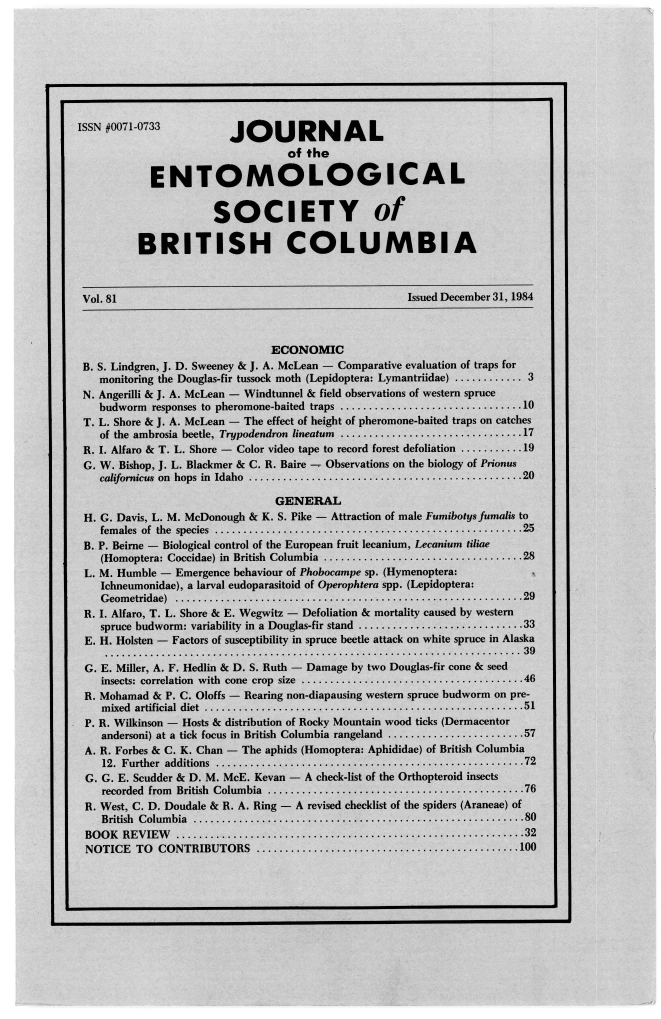Attraction of male <i>Fumibotys fumalis</i> to females of the species
Keywords:
<i>Fumibotys fumalis</i>Abstract
Biological and behavioral studies show that female <i>Fumibotys fumalis</i> (Guenée) attract males of their species. Males responded to females between 11 p.m, and 3 a.m. and in greatest numbers between 12 p.m. and 1 a.m. Females were attractive 0.5 days after adult emergence and at least to the seventh day after emergence. Females were not attractive to males the evening following the night of mating.References
Berry, R.E. 1974. Biology of Pryausta fumalis on peppermint in Oregon. Ann. Ent. Soc. Amer. 67:580-582.
Berry, R.E. 1977. Insects on Mint. Pacific Northwest Cooperative Extension Publication No. 182. 15 pp.
Forbes, W.T.M. 1923. The Lepidoptera of New York and Neighboring States. Cornell Univ. Agric. Exp. Stn. Ithaca, N.Y. Memoir 68. 729 pp.
Klassen, W., R.L. Ridgeway, and M. Inscoe. 1982. Chemical Attractants in Integrated Pest Management Programs. Pp. 13-130. In: A.F. Kydonieus and M. Beroza (eds.). Insect Suppression with Controlled Release Pheromone Systems. CRC Press Inc. Boca Raton, Florida.
Munroe, E. 1976. Pyraloidea. In The Moths of America North of Mexico.. Pyralidae (part), Fascicle 13(2A):26-28.
Pike, K.S. 1979. Peppermint. Fumibotys fumalis, control, Washington Insecticide and Acaracide 4:88.
Pike, KS. and L.W. Getzin, 1981. Persistence and Movement of Chlorpyrifos In Sprinkler-Irrigated Soil. J. Econ. Entomol. 74:385-388.
Downloads
Published
Issue
Section
License
Authors who publish with the Journal of the Entomological Society of British Columbia agree to the following terms:
-Authors retain copyright and grant the journal right of first publication with the work simultaneously licensed under a Creative Commons Attribution License that allows others to share the work with an acknowledgement of the work's authorship and initial publication in this journal.
-Authors are able to enter into separate, additional contractual arrangements for the non-exclusive distribution of the journal's published version of the work (e.g., post it to an institutional repository or publish it in a book), with an acknowledgement of its initial publication in this journal.
-Authors are permitted and encouraged to post their work online (e.g., in institutional repositories or on their website) prior to and during the submission process, as it can lead to productive exchanges, as well as earlier and greater citation of published work (See The Effect of Open Access).


